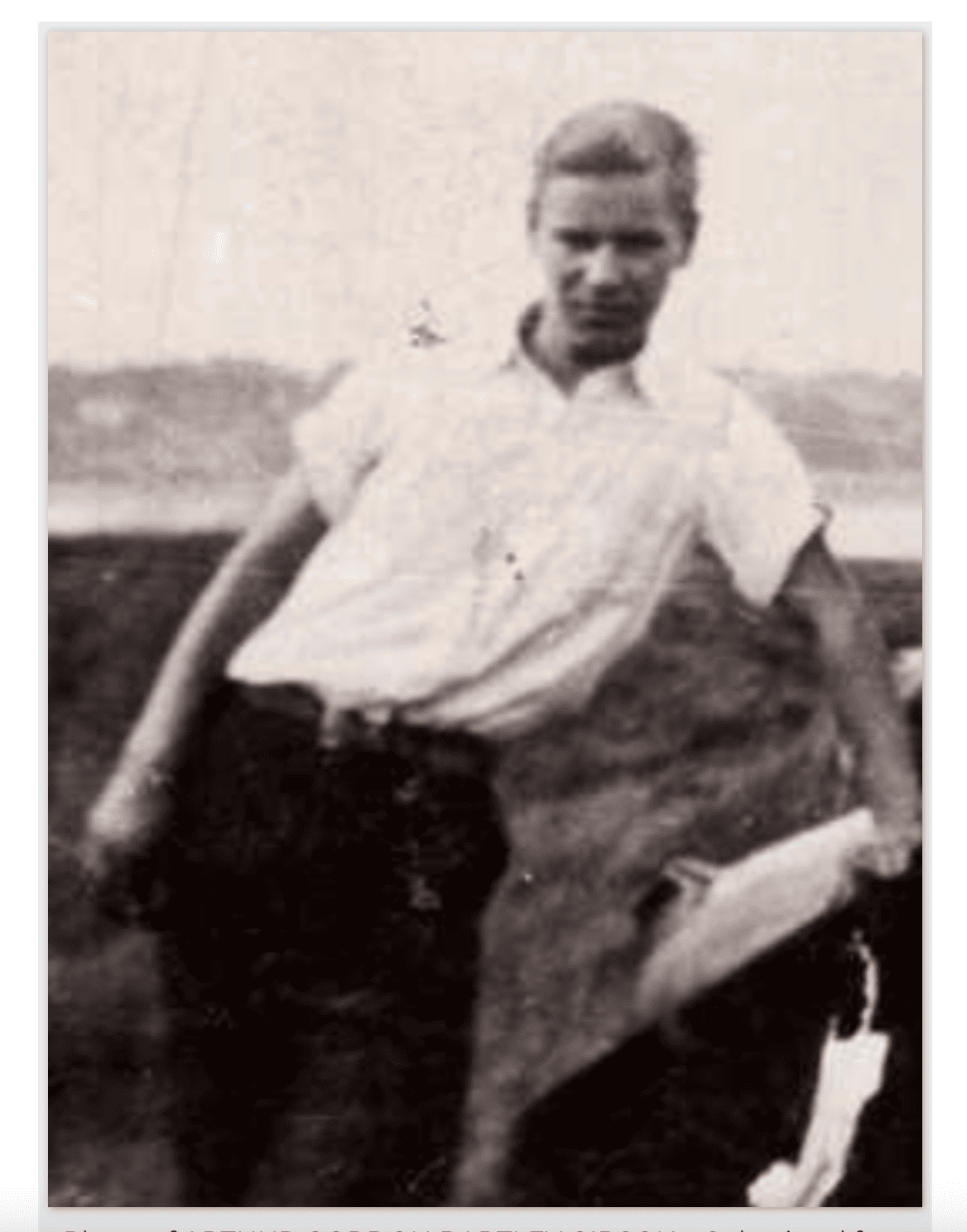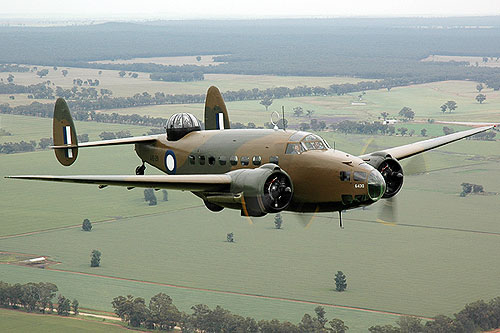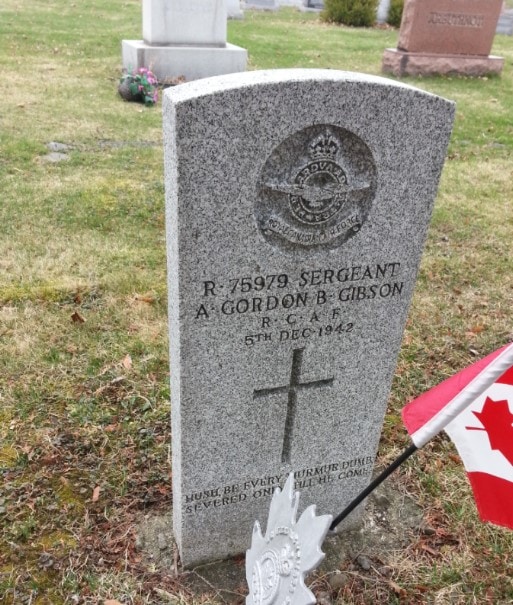In both world wars, there were men killed in action or who died in service who had a connection with Niagara-on-the-Lake but for various reasons were not commemorated on either the memorial clock tower cenotaph in Old Town or the Niagara Township war memorial in Queenston. In some cases, they lived for only a brief time in Niagara and had no family here when the monuments were built. In other instances, they had lived near McNab, not then part of NOTL or Niagara Township. While their names are not read out at the ceremonies at these monuments on Remembrance Day, they too should be remembered.
——————
Among the war dead commemorated at Christ Church McNab, now part of Niagara-on-the-Lake, was a man who wanted to fight in the Second World War but was struck down before he could go into combat.
In 1911, Amelia Bartley and Harry Gibson, immigrants from England, married in St. Catharines. Amelia gave birth to her second son, Arthur Gordon Batley Gibson on Dec. 6, 1919. He was known as Gordon.
Gordon attended the St. Catharines Collegiate and Vocational School from September 1932 to May 1937 and landed a job with the Guarantee Dye Company as a stockman.
He did not see a future in this job and in October 1937 found a new position with General Motors. Two years later, he returned to school to study drafting and on completion of his education in March 1940 he was employed as a draftsman by the Foster Wheeler Company.
Gibson read about the tragedy and heroism of the miracle of Dunkirk. He followed the war in the air, reading of the Battle of Britain, July 10 through Oct. 31, 1940. It must have inspired him.
On Dec. 11, 1940, he enlisted in the Royal Canadian Air Force, hoping to become a pilot.
He initially reported to the manning depot in Toronto, learning the rudiments of service life and was then sent to Picton on Dec. 29 for more of the same.
On Jan. 11, 1941, now outfitted in uniform and trained in the discipline and decorum of an airman, he was sent to the RCAF station in Dartmouth, N.S., for yet more training in the various functions of airmen, on the ground and in the air.
He was on the move again and attended the Initial Training School in Victoriaville, Que., from April 10 to May 20. It was here that the trainers determined whether a man would be sent to flight school or to be trained as crew. Gibson was to be trained as a crew member in a multi-engine plane.
Between Sept. 15 and Nov. 8, he attended the Initial Flight Training School to become thoroughly familiar with flight as a crew member. From there he was sent to Observer School in London, passing that course on Jan. 17, 1942.
Over the next six months he attended a bomber/gunner school, an air navigation school and a general reconnaissance school, all part of the Air Commonwealth Training Plan.
Finally, on Aug. 1, 1942, Gibson was considered trained enough to serve as an observer, navigator, bomb aimer, or gunner on a multi-engine aircraft and was promoted to flight sergeant.
He was anxious to go overseas and get into action, but was forced to drag his heels. Finally, an opportunity for action arose. Recent graduates of the Air Commonwealth schools were offered the chance to fly new aircraft to England for the Royal Air Force Ferry Command out of Dorval, Que.
After delivering the aircraft, the men would be assigned to an active squadron in England as crew members in Bomber Command.
Gibson finally got his chance and on Oct. 9 was transferred to the RAF Ferry Command squadron at Dorval as a navigator.
On Dec. 5, he was assigned to a new Hudson VI light bomber as navigator for a flight from Dorval to the American airbase at Houlton, Maine.
There the plane would have its fuel topped up and then take off for Gander and then on to the U.K. Gibson was going to war at last.
It was not to be. As his aircraft approached the runway at Houlton, the pilot had to abort the landing. In attempting to gain height to go around for another landing approach, the plane stalled and spun into the ground.
Gibson was killed instantly.
Because he attended Christ Church in McNab, he was commemorated there but was buried in Victoria Lawn Cemetery in St. Catharines.
With Christ Church now closed and no longer consecrated, thankfully the Niagara-on-the-Lake Museum is taking custody of key church artifacts, including memorials to the fallen. Flight Sergeant Gibson will be remembered.
- On the heels of The Lake Report’s 53-part “Monuments Men” series, which exhaustively documented the story of every soldier commemorated on the town’s two cenotaphs, Ron Dale’s “Missing in Action” stories profile Niagara-on-the-Lake soldiers who died in wartime but are not listed on the town’s monuments.












